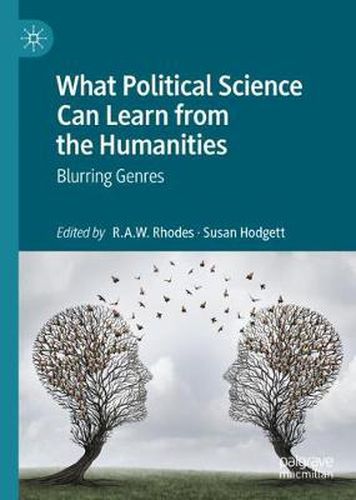Readings Newsletter
Become a Readings Member to make your shopping experience even easier.
Sign in or sign up for free!
You’re not far away from qualifying for FREE standard shipping within Australia
You’ve qualified for FREE standard shipping within Australia
The cart is loading…






This title is printed to order. This book may have been self-published. If so, we cannot guarantee the quality of the content. In the main most books will have gone through the editing process however some may not. We therefore suggest that you be aware of this before ordering this book. If in doubt check either the author or publisher’s details as we are unable to accept any returns unless they are faulty. Please contact us if you have any questions.
This book asks, ‘what are the implications of blurring genres for the discipline of Political Science, and for Area Studies?’ It argues novelists and playwrights provide a better guide for political scientists than the work of physicists. It restates the intrinsic value of the Humanities and Social Sciences and builds bridges between the two territories. The phrase blurring genres covers both genres of thought and of presentation. Genres of thought refers to such theoretical approaches as post structuralism, cultural studies, and especially interpretive thought. Part 1 explores genres of thought, focusing on the use of narratives. Specific examples include the narratives of post-truth political cultures; narratives in Canadian general elections; autoethnography as a new research tool; and novels as a way of understanding economic development. Part 2 emphasises genres of presentation and focuses on the visual arts. The chapters cover: photography in British political history, the architecture of American statehouses and city halls, design, comics, and using the creative arts to improve policy practice. This book is interdisciplinary and should have an appeal beyond political science to area studies specialists and others in the humanities. It is an advanced text, so it is aimed primarily at academics and postgraduates.
$9.00 standard shipping within Australia
FREE standard shipping within Australia for orders over $100.00
Express & International shipping calculated at checkout
This title is printed to order. This book may have been self-published. If so, we cannot guarantee the quality of the content. In the main most books will have gone through the editing process however some may not. We therefore suggest that you be aware of this before ordering this book. If in doubt check either the author or publisher’s details as we are unable to accept any returns unless they are faulty. Please contact us if you have any questions.
This book asks, ‘what are the implications of blurring genres for the discipline of Political Science, and for Area Studies?’ It argues novelists and playwrights provide a better guide for political scientists than the work of physicists. It restates the intrinsic value of the Humanities and Social Sciences and builds bridges between the two territories. The phrase blurring genres covers both genres of thought and of presentation. Genres of thought refers to such theoretical approaches as post structuralism, cultural studies, and especially interpretive thought. Part 1 explores genres of thought, focusing on the use of narratives. Specific examples include the narratives of post-truth political cultures; narratives in Canadian general elections; autoethnography as a new research tool; and novels as a way of understanding economic development. Part 2 emphasises genres of presentation and focuses on the visual arts. The chapters cover: photography in British political history, the architecture of American statehouses and city halls, design, comics, and using the creative arts to improve policy practice. This book is interdisciplinary and should have an appeal beyond political science to area studies specialists and others in the humanities. It is an advanced text, so it is aimed primarily at academics and postgraduates.